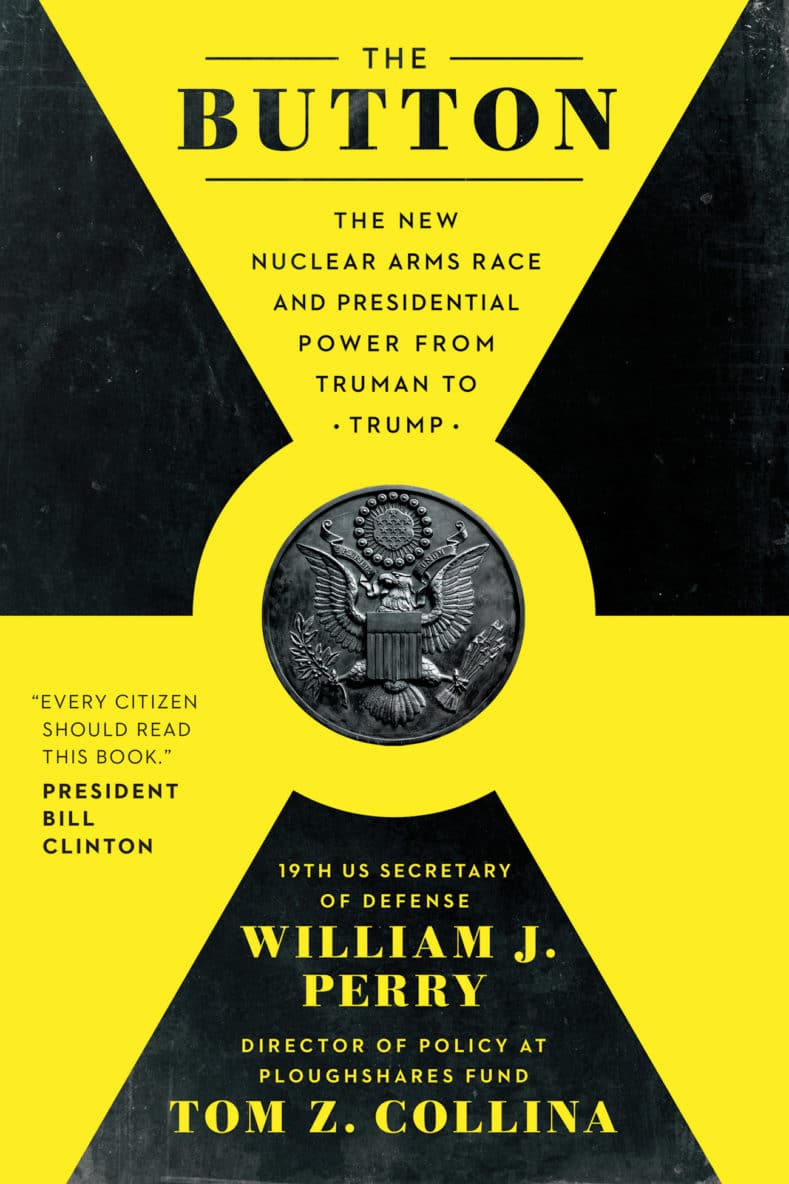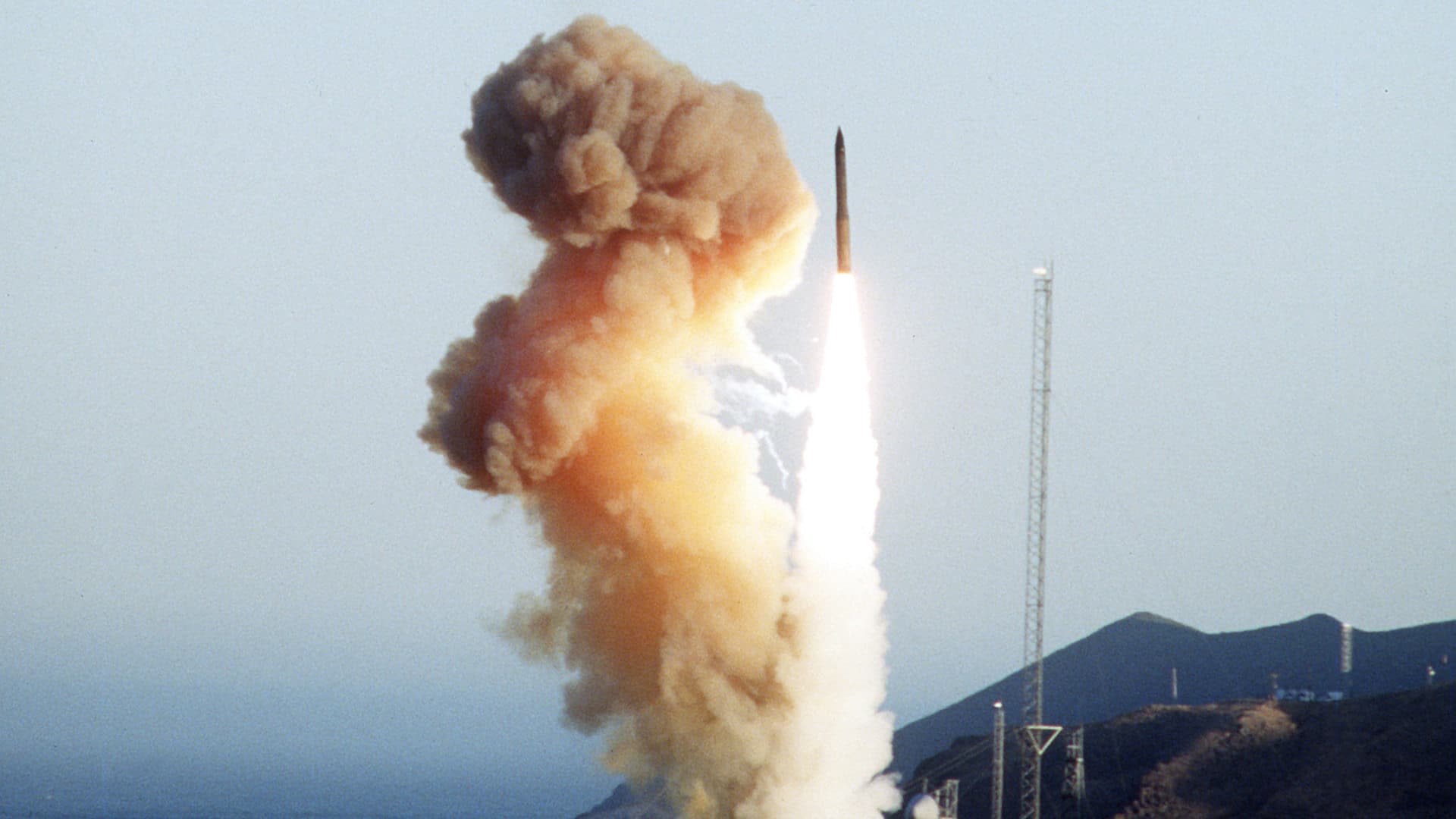Back in the bad old days of the Cold War, both the United States and the USSR maintained thousands of nuclear weapons, ready to be launched at a moment’s notice. Only one person had the authority to unleash America’s nuclear forces: the president of the United States. He could do so at any time, without consulting Congress or the military or anyone else save his own conscience. Although the mechanism for doing so never actually consisted of pushing a button, that became the popular metaphor for setting off doomsday.
It was a precarious state of affairs, but there was a certain cold reasoning, or perhaps rationalization, behind it. If the U.S. was attacked, went the argument, there would be no time for careful consideration before nuclear blasts began going off on American soil. Retaliation would have to be immediate. The only way to assure deterrence was to maintain the unquestioned ability for immediate retaliation. So wherever the president went, a military aide followed close behind, carrying the “football,” a special briefcase containing all the secret codes and communication equipment needed to launch World War III at any time.

BOOK REVIEW — “The Button: The New Nuclear Arms Race and Presidential Power From Truman to Trump,” by William J. Perry and Tom Z. Collina (BenBella, 335 pages).
Almost 30 years after the fall of the Soviet Union and the end of the Cold War, little has changed. American and Russian nuclear arsenals, while reduced in numbers due to significant arms control agreements (which have been largely abandoned), still remain on hair-trigger alert, poised to respond to the nonexistent threat of a surprise “bolt from the blue” attack. And the man with the football, the only individual who can order the use of U.S. nuclear weapons, remains the president of the United States: Donald J. Trump. As William J. Perry, former defense secretary in the Clinton administration, and Tom Z. Collina, policy director of the Ploughshares Fund, a nonprofit nuclear disarmament foundation, note in “The Button: The New Nuclear Arms Race and Presidential Power From Truman to Trump,” “the U.S. president can still unilaterally launch a nuclear war in about the same time it takes to order a pizza.”
Perry and Collina’s book is actually the second volume with a similar title to deal with nuclear weapons and warfare. The first, Daniel F. Ford’s “The Button: The Pentagon’s Command and Control System — Does It Work?,” was published in 1985 at the height of Cold War tensions and focused mostly on the precarious state of U.S. early warning systems and their ability to assure retaliatory capacity, even as they increased the danger of false alarms and accidental war. Revisiting those same issues 35 years later, Perry and Collina’s work demonstrates that instead of improving with the end of the Cold War, matters have actually become far more dangerous.
The book appears at some important historical and contemporary junctures. 2020 is the 75th anniversary of the birth of the atomic bomb at the Trinity site in New Mexico, and its first and (so far) last use against human beings in war at Hiroshima and Nagasaki. It also comes as the only remaining major nuclear arms agreement, the 2010 New START Treaty, is set to expire in February 2021. The treaty can be automatically extended for another five years by mutual agreement between President Vladimir Putin of Russia and President Trump. Putin has already agreed. Trump has not.
The abandonment of international treaties by the Trump administration is only one aspect of the book’s carefully reasoned and clearly articulated argument. For younger generations to whom talk of megadeaths and megatons seems like ancient history, Perry and Collina have a message: “If you missed out on the first nuclear arms race and feel like you’ve been passed over, you’re in luck. It’s back.”
Casting aside treaties and any logical military necessity, the U.S. and Russia are gearing up for a second nuclear arms race more dangerous than the first, developing new weapons and “modernizing” old ones while extending the potential battlefield into the previously sacrosanct realm of outer space. Yet their rationales remain essentially unchanged from the Cold War, and just as invalid. Rather than a nuclear Pearl Harbor, “The greatest danger of a nuclear exchange during the Cold War came not from a deliberately planned attack, but through bad information, unstable leadership, or false alarms,” Perry and Collina write, chronicling a wide variety of historical examples, some from Perry’s personal experience in the Pentagon.
“We have been focused on the wrong threat,” they note, which coupled with the policy of presidential sole authority, makes the U.S. as well as the rest of the world more vulnerable to nuclear catastrophe. “We are preparing for a first strike from Russia that is very unlikely; what is not so unlikely is that we will blunder into a nuclear war. Yet by preparing for the surprise first strike, we actually make the blunder more likely.”
And there’s a new wrinkle that didn’t exist during the Cold War: the threat of cyberattacks directed at nuclear weapons command and control systems. As detailed in the book, we had something of a sneak preview of this possibility back in the 1970s and ’80s when computer glitches resulted in faulty missile attack warnings that came close to triggering war on several occasions, but these weren’t the result of deliberate hacking attempts. Now, however, cyberwarfare is infinitely more subtle and sophisticated, raising the specter of targeted attacks to spoof or cripple U.S. and Russian systems. “What if hackers could take control of U.S. nuclear weapons — to launch them, or to prevent their launch when so ordered?” the authors write. “Cyber threats,” they continue, “dramatically increase the danger of accidental nuclear war and could undermine deterrence itself.”
Perry and Collina depict just such a nightmare scenario in the preface of “The Button,” in which an unnamed U.S. president is interrupted on the golf course by a nuclear attack warning and impulsively orders massive retaliation without waiting for confirmation, only to find out too late that the attack was a false alarm created by a hacking attack on Strategic Command computers. Such a possibility only magnifies the risks of placing nuclear authority in the hands of a single individual who would have only minutes to make the decision to launch.
Far from being an idealistic polemic pleading a noble but unrealizable case for the total abolition of nuclear weapons, “The Button” sets out practical, well-defined, well-explained steps for reducing the dangers, including ending the policy of presidential sole authority to order nuclear weapons use, prohibiting launch on warning and first use, and retiring all land-based intercontinental ballistic missiles (while still retaining a more-than-adequate and invulnerable deterrent capacity with our submarine and bomber forces). Aside from greatly reducing the threat of accidental or inadvertent nuclear war, Perry and Collina point out another considerable advantage: saving $1.7 trillion that could be redirected to other more urgent national needs.
“The United States needs to learn the right lessons from the Cold War,” they conclude. “We need to change gears and design a nuclear force and policies to minimize this danger. This will save money, prevent a new arms race, and make us all safer.”
There’s still time, but it’s running out. “We are all on the atomic Titanic, and the ship is headed for a hidden iceberg.”










